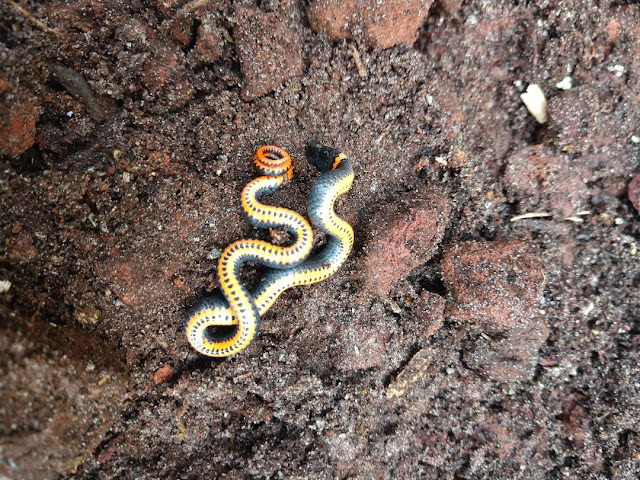Life in Unlikely Places
Two days ago, I planted a small Bahama cassia (Senna mexicana var. chapmanii) in front of my new home. The plant was a gift from a dear friend and the location is a place that needs something other than the lifeless non-natives that now line it. I have never understood "foundation plantings." They are theoretically installed to increase the property value of one's home, but I would pay my landlords for the privilege of removing the planting that currently lines the outer edge of my front porch.
My foundation planting is comprised of three medium-sized Schlefflera arboricola anchored at each end by very scrawny non-native boxwoods. They have absolutely no value here for wildlife. They are simply evergreen and easy to maintain. Someday, I hope to replace them with something that will add life to my landscape, but I'll approach my landlords about this once I've done a few more things that are a higher priority. There is no need to overwhelm them so soon.
Previous residents must have thought that they were doing the planting good by covering the surface with a layer of lava rock - another concept that escapes me except when one lives next to a volcano. Weeds emerge from beneath this rock, but they are difficult to pull without first pulling the rock away from the base of the plant. The lava rock is not a labor-saving addition here and it is another nuisance that I intend to rid my landscape of someday.
The evergreen cassia will eventually fill in the 4-foot gap at the end of this narrow planting area. Its location will screen a view from my porch that is best screened, but it won't unduly shade the plants I've added at the other end of the schleffleras. Unless we have a severe freeze, it will bloom all year and that will attract the attention of three sulfur butterfly species that are relatively common in this region of Florida. Time will tell if any of them find my house in this nearly lifeless suburban landscape that now engulfs my home, however. I'm betting they will.
I never cease to be amazed, however, at the tenacity of nature even in such settings. Wildlife often find a way to make use of the "rends and tears" that form in the fabric of otherwise sterile urban developments. Species manage to eke out an existence given the smallest of chances to do so and they wait for us to give them more to work with.
Case in point is this beautiful tiny ringneck snake that I uncovered when I pulled the lava rock away to plant my cassia. I first had to move a clay pot that was sitting on top of it. As I did so and used my hand to sweep the rock to one side, I exposed this snake. Its presence tells me that I have insects in my soil and that the previous tenants did not routinely poison this yard with the assistance of a lawn-chemical company. It also tells me that even the small changes I make now will have real impacts.
Where I live, homeowners frequently bury their yards with rock and all-but-eliminate their vegetation in a mistaken belief that they will make it impossible for "wildlife" to live near them - defined more often than not by "snakes." My little ringneck snake proves that nature is tenacious despite our efforts to limit it. I am thrilled to share my new landscape with him/her and I hope to increase the diversity of species living with me in the days, months and years ahead. I'll keep you posted. Thanks for joining me.






Comments
Post a Comment